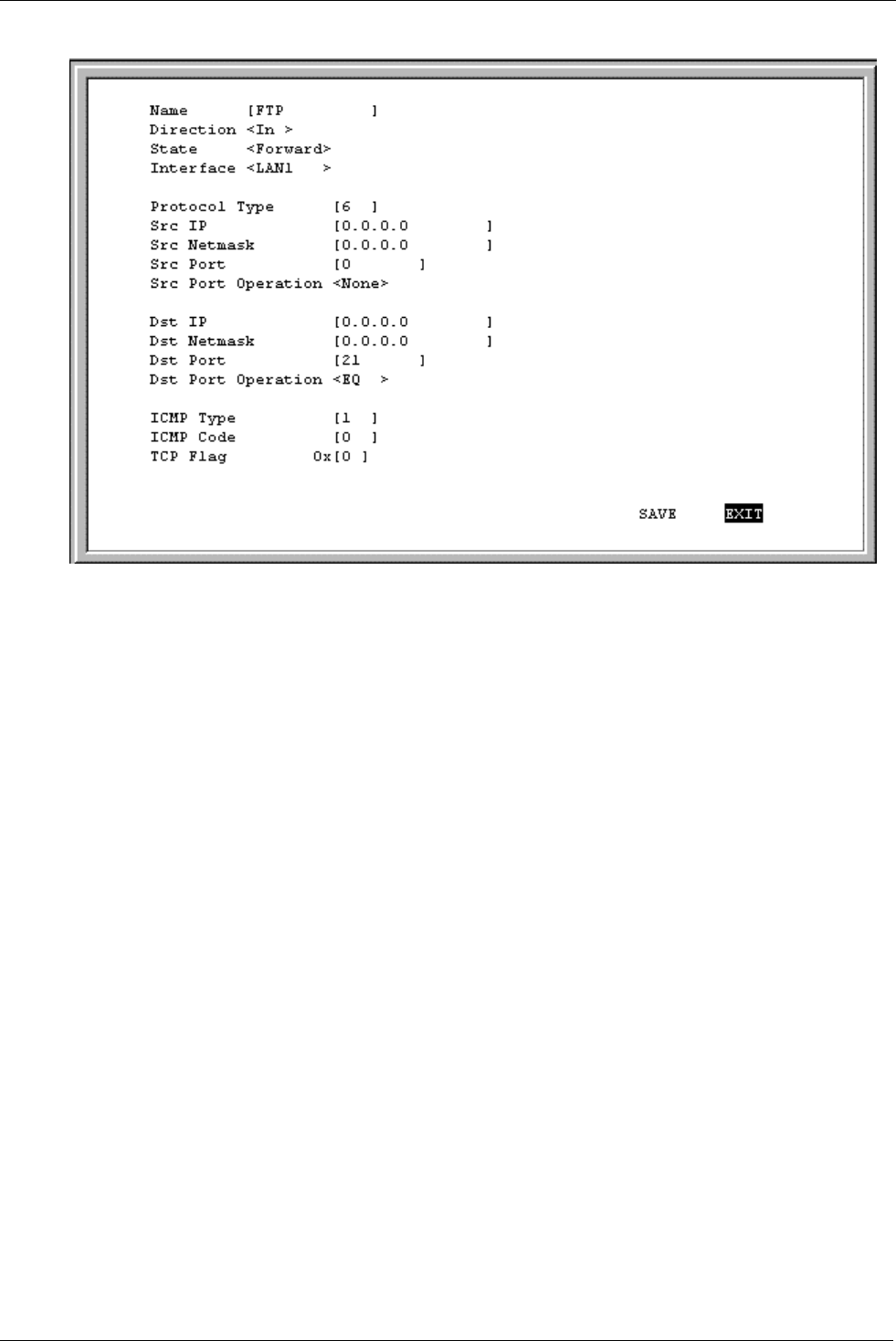
DI-1162/DI-1162M Remote Access Router
65
The IP Filter parameters are described below:
♦
Name –
This is a 12 character (maximum), alphanumeric, user-defined name, used to identify the IP filter.
♦
Direction –
This defines the direction of the packet relative to the Interface parameter below.
♦
State –
This is used to define the routing decision applied to the packet. The three routing decisions are
described:
1.
Forward
–
This allows the routing of the packet, if it has met the criteria of the corresponding IP filter.
2.
Drop
–
This drops (doesn’t allow routing for) a specific packet that has met the criteria of the
corresponding IP filter.
3.
Disable
–
This does not apply the IP filter.
♦
Interface –
This applies the IP filter to a specific interface, LAN or one of the WANs.
♦
Protocol Type –
This is a protocol identifier, as assigned by the Internet Assigned Numbers Authority
(IANA). The values of this identifier are described in RFC-1700. This router supports the following:
1.
protocol type
= 1, this is Internet Control Message (ICMP), defined in RFC 792.
2.
protocol type
= 6, this is Transmission Control (TCP), defined in RFC 793.
3.
protocol type
= 17, this is User Datagram (UDP), defined in RFC 798.
4.
protocol type
= 0, this includes ICMP (1), TCP (6), and UDP (17).
♦
Src IP –
This is the source address in the IP header of this packet.
♦
Src Netmask –
This mask is bit-wise AND’d with the source IP address, and compared to the IP address of the
incoming interface, for which the packet arrived.
♦
Src Port –
This is the source
port in the TCP or UDP header of the packet.
♦
Src Port Operation –
Select a source port operation:
None
,
EQ
,
GT
, or
LT
.
♦
Dst IP –
This is the destination address in the IP header of the packet.


















